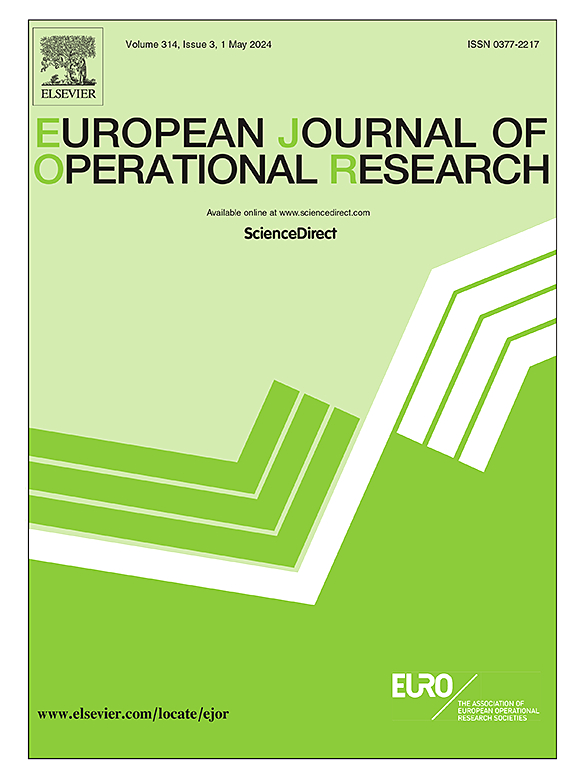Integrated vessel traffic scheduling and berth allocation with restricted channel widths
IF 6
2区 管理学
Q1 OPERATIONS RESEARCH & MANAGEMENT SCIENCE
引用次数: 0
Abstract
Due to the surging volume of seaborne trade and high frequencies of port calls by vessels, seaports worldwide have been experiencing various levels of traffic congestion in the past few years. The incoming and outgoing vessel traffic in port areas is bottlenecked by the traffic infrastructure (e.g., navigation channels and inner anchorages) and the hydrological conditions (e.g., tidal effects) of a port, which can lead to significant congestion when vessel traffic and vessel service are not effectively planned. In this study, we investigate an integrated vessel traffic scheduling and berth allocation problem for congestion mitigation in a port. The problem encompasses the decision-making process of scheduling incoming and outgoing vessels in the navigation channels and anchorage areas of a port, and allocating berth space to vessels for service, so as to minimize the overall berthing and departure delay of vessels. In particular, we consider a practical scenario where the width of each channel may vary at different segments. This channel width restriction can render the problem much more difficult compared to a traditional setting with identical channel widths. We develop a binary integer programming model for the problem, and present a novel machine-learning-enhanced column generation algorithm for addressing this complex problem. Our method applies machine learning models to restrict vessels’ port stay times within limited time ranges, so that the search space for column generation can be reduced, leading to a trade-off between solution quality and computation efficiency. We validate the effectiveness of the proposed solution method utilizing both a case study of the Port of Shanghai and a computational study on synthetic large-scale instances.限制航道宽度下船舶交通调度与泊位分配的综合研究
由于海运贸易量的激增和船舶停靠港口的频率高,世界各地的海港在过去几年中都经历了不同程度的交通拥堵。港口的交通基础设施(例如航道和内锚地)和水文条件(例如潮汐效应)阻碍了港口进出港口的船舶交通,如果船舶交通和船舶服务没有得到有效规划,就会导致严重的拥堵。本文研究了港口船舶交通调度与泊位分配的综合问题。该问题包括在港口航道和锚地内调度进出船舶,并为船舶分配泊位进行服务的决策过程,以使船舶的整体靠泊和离港延误最小化。特别是,我们考虑一个实际的场景,其中每个通道的宽度可能在不同的部分变化。与具有相同通道宽度的传统设置相比,此通道宽度限制会使问题更加困难。我们开发了一个二进制整数规划模型,并提出了一种新的机器学习增强的列生成算法来解决这个复杂的问题。我们的方法应用机器学习模型将船舶的港口停留时间限制在有限的时间范围内,这样可以减少列生成的搜索空间,从而在解决质量和计算效率之间进行权衡。我们利用上海港的实例研究和综合大尺度实例的计算研究验证了所提出的求解方法的有效性。
本文章由计算机程序翻译,如有差异,请以英文原文为准。
求助全文
约1分钟内获得全文
求助全文
来源期刊

European Journal of Operational Research
管理科学-运筹学与管理科学
CiteScore
11.90
自引率
9.40%
发文量
786
审稿时长
8.2 months
期刊介绍:
The European Journal of Operational Research (EJOR) publishes high quality, original papers that contribute to the methodology of operational research (OR) and to the practice of decision making.
 求助内容:
求助内容: 应助结果提醒方式:
应助结果提醒方式:


